In a world where High End Munich 2025 proudly paraded $300,000 speakers carved from rare Albanian moonwood and cables thicker than a Thames barge rope—comes a refreshing slap of sanity from, of all places, Britain. The Q Acoustics 3020c isn’t gold-plated, cryogenically treated, or tuned by a reclusive monk with perfect pitch. It’s just… good. Really good. And priced like it was built for people who listen to music instead of measuring their ego in millimeters of beryllium.
While Munich descended further into a cosplay convention for audiophile aristocrats, Q Acoustics showed up like Blackadder at a royal banquet—armed with wit, purpose, and a blunt object in the form of a compact bookshelf speaker that cost less than a power cable at Halle 2.
What’s made the Q Acoustics 3000 range such a staple isn’t smoke, mirrors, or a press release full of adjectives with nowhere to go — it’s value. Actual, real-world value. The kind that doesn’t evaporate the moment you check your bank account.

With the new 3000c series, Q Acoustics somehow kept the pricing grounded — $399 to $1,199 a pair — only a modest bump over the older 3000i models. And that’s coming from someone who still owns and regularly listens to the 3020i, 3050i, and 3030i. They’ve been in my rotation for years for a reason: they deliver. Honest sound, smart design, and none of the boutique nonsense that turns budget gear into a game of compromises.
Q Acoustics didn’t reinvent the wheel here — they just made it roll smoother, sound better, and still cost less than your monthly grocery bill in 2025.
Part of the reason expectations are so high for the 3000c is because Q Acoustics has been on an absolute heater with the 5000 series — a lineup that’s won more industry awards than Blackadder has schemes, and with far fewer spectacular failures. Seriously, between the 5040 and 5020 models alone, Q has been sweeping up accolades like it’s their side hustle.

I was so impressed with the 5040 that I ended up buying the review pair—because it’s the perfect litmus test for any amp you throw at it, whether power, integrated, or network. The 5040 isn’t about plush warmth or coddling your dodgy recordings like the outgoing 3000 models.
It’s leaner, sharper—trading some of that cozy midrange warmth for razor-edged clarity, nitpicky detail, and imaging so precise it could cut through Baldrick’s excuses faster than Blackadder’s wit on a bad day.
The treble’s brighter too—more illuminated, less willing to sugarcoat the truth. If you want a smaller version that doesn’t skimp on the essentials, the 3020c nails most of this in a bookshelf or stand-mount package. This isn’t your cuddly old Q Acoustics—it’s the kind of speaker that makes your amplifier earn its keep, or else.
What’s New with the Q Acoustics 3000c Series: Tech That Actually Matters
Q Acoustics didn’t just slap a new badge on the 3000c speakers—they’ve borrowed some serious tech muscle from their fancier 5000 and Concept lines. We’re talking about their C3 (Continuous Curved Cone™), which shapes the driver cones for cleaner, more accurate sound.
Then there’s P2P (Point to Point) bracing—basically, extra internal reinforcements that kill unwanted cabinet vibrations before they mess with your music, plus better driver isolation to keep everything tight and focused.

The lineup covers all bases: 3010c bookshelf speakers at $399/pair, 3020c standmounts for $549, 3030c larger standmounts at $699, and the 3050c floorstanders topping the range at $1,199 a pair. For those building a home theater, the 3090c center channel at $399 rounds out the package.
The Q Acoustics 3020c is a compact standmount speaker that thinks it’s bigger than it is. Packing a 120mm (4.75-inch) bass driver with a 22mm (0.9-inch) tweeter, it stretches from 60 Hz up to 30 kHz with a nominal 6-ohm load—dropping to 3.3 ohms when it wants to keep your amp on its toes—and a sensitivity of 87 dB. It prefers a partner amp in the 30 to 100-watt range, so don’t go throwing it at a monster just for kicks.
Measuring 254 x 155 x 251 mm (10.9 x 6.9 x 11.1 inches) and tipping the scales at a sensible 5.5 kg (12 lbs) each, these fit nicely on a credenza or a decent pair of 24-inch stands—because let’s be honest, they deserve better than being stuffed in a bookshelf that’s only slightly bigger than the speaker itself. Solid enough to hold its own, and just small enough to avoid your cat using it as a throne — and why do people actually do that?

The goal of all that tech jargon is clear: a midrange that’s sharp and detailed, bass that’s tight without being overblown, and highs that reveal nuance without harshness. Plus, a soundstage that’s wide and immersive—something you usually don’t get at this price. Whether the 3020c actually delivers on those promises? That’s the real question.
What’s Really Under the Hood: The C3 Continuous Curved Cone Driver
The C3 Continuous Curved Cone isn’t just a fancy name—it’s a genuine improvement in loudspeaker driver design. Taken from Q Acoustics’ higher-end 5000 series, it combines the bass strength of a traditional straight cone with the control benefits of a flared cone. The result is a smoother transition between woofer and tweeter, better dispersion, tighter bass response, and less distortion.
This design also reduces cabinet resonances, letting you place speakers closer to walls without turning your room into an acoustic disaster. The soundstage feels more natural, with improved accuracy and scale.
On the outside, the 3000c series sticks to a clean, minimalist look—no visible bolts or seams, just a one-piece driver trim in satin nickel or satin chrome (white model only). Finishes include light Pin Oak, dark Claro Rosewood, Satin Black, and Satin White—solid choices that avoid being flashy but won’t clash with your decor.

High-Frequency and Mid/Bass Driver Tech in the 3000c Series
The tweeter in the 3020c borrows from the 5000 and Concept series playbooks: it’s hermetically sealed and mechanically isolated—basically floating free from the baffle. This clever move keeps internal cabinet pressure and vibrations from messing with the delicate high frequencies. Plus, the tweeter’s inner chamber is vented just right to cut distortion and hits a lower crossover point for smoother handoff to the mid/bass driver.
Speaking of the mid/bass, it all comes down to the C3 cone—Q Acoustics’ way of sorting out the usual midrange and bass issues. The curved shape requires strong magnets, so they use hefty ones with the voice coils. The result is bass that stays tight and controlled, with enough headroom to handle dynamic shifts without breaking a sweat.
The magnets also push the pole plate and yoke close to saturation, which keeps flux modulation and harmonic distortion in check—meaning cleaner, more accurate sound where it counts.
System Matching: Pairing These Speakers Is Like Picking the Right Pizza — You Don’t Want Some Half-Baked Amateur Slapping Sauce on Perfection
These speakers play nicely with a wide range of amplifiers—I’ve tried them with everything from the Cambridge Evo 150 and NAD C316BEE V2 to the beefier Schiit Ragnarok 2 and the high-end Cambridge Edge A.
Unlike the 3030i, the 3020c doesn’t demand a power boost well beyond the specs to perform, making them more straightforward to drive. Plus, their bass output is less fussy about room placement and interacts less awkwardly with the back wall compared to their older siblings, which makes setup a bit less of a headache.
If you were fond of the older 3000 series, two things hit you right away with the 3020c: the mid-bass through lower treble is clearer—and the overall tonal balance has shed a bit of its comforting bulk. It’s leaner, yes, but don’t worry, it’s not starving; just less of the “plump and cozy” and more “businesslike and alert.”

If the 3020i was your classic Detroit-style upside-down pizza—thick, with those burnt, caramelized edges, hearty and unapologetically filling——the 3020c is more like a no-nonsense bar pie from the Star Tavern in New Jersey: thinner crust, a little snap, and just enough pepperoni to keep things interesting.
The 3020c’s flavor profile is way easier to customize—add extra cheese, toss on some anchovies if you’re feeling adventurous, and maybe wash it all down with an ice-cold Brio Chinotto. It’s a pizza that plays nice with whatever you want to throw at it, not one that demands to be eaten exactly as is.
The 3020c stick with Q Acoustics’ usual rear port setup, and my advice on the foam bungs hasn’t changed in years—don’t use them. I’ve reviewed and owned enough of their speakers to know that plugging the ports just chokes the life out of them. Instead, give them some breathing room. Pull them out from the wall a bit and you’ll avoid any potential low-end overload—though to be fair, that’s not really a big concern here. The 3020c’s bass is leaner and lighter on its feet than the 3030i, both in terms of impact and tonal weight.
Listening Impressions: Taming the Q Acoustics 3020c Without a Royal Commission or a Pointy Stick
Getting the best out of the 3020c doesn’t require divine intervention or a squadron of Elizabethan sycophants—just a little thought and the right setup. They’re more refined than their predecessors, but still feisty enough to bite if you plonk them against a wall and hope for the best.
Warm, they are not—these aren’t your cozy log-fire speakers handing out sonic marshmallows. But nor do they stomp off into the land of the cold and clinically neutral like a Puritan at a May Day festival. Calling them razor-flat would be giving them airs—they’re clear, detailed, and open, but with just enough personality to make them a brilliant canvas for warmer amps or sources to do a little impressionist painting on. Think less icy ruler, more sharp-tongued diplomat with a good tailor.
Compared to the Q Acoustics 5020, the 3020c trade a bit of richness for a quicker, more agile presentation—like swapping a velvet smoking jacket for a well-cut blazer. They’re not quite as confident when it comes to dynamics either. The 5020 and 5040 may play it neutral tonally, but they manage crescendos and sudden shifts with the poise of someone who’s actually read the script before walking on stage.
Go warm with the 3020c, but don’t smother them in sonic bubble wrap. The NAD C316BEE V2 hits a sweet spot—adding just enough mid-bass and lower midrange heft to give the music a bit more backbone, while still keeping things nimble. Vocals gain body and warmth, and that slight edge up top from the 3020c gets smoothed out without turning into mush. It’s like handing the speakers a wool coat without making them wear mittens.
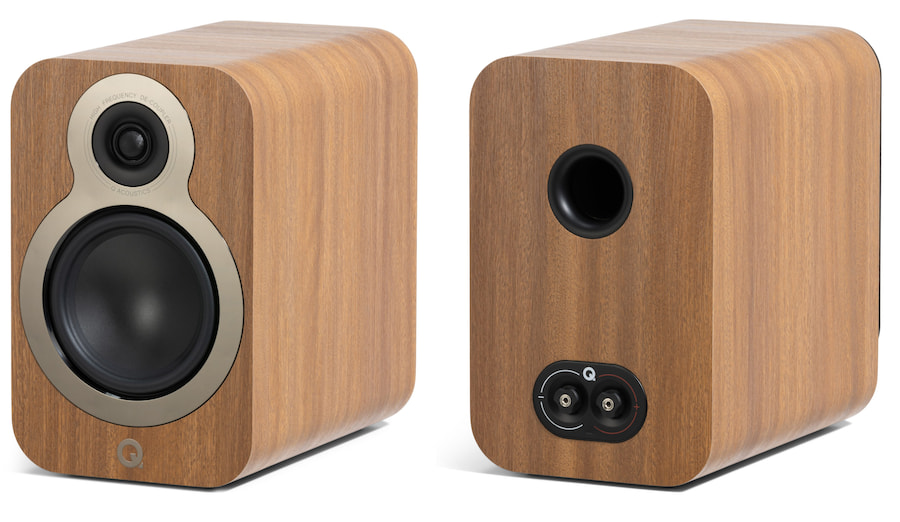
My other advice with the 3020c? Bring an amp with some grip and a bit of bottom-end beef. These speakers are quick on their feet and shine when it comes to clarity, but they’re not going to deliver the kind of low-end wallop you get from the 3030i. That one can rattle your bookshelves with the right amp. The 3020c, by contrast, is more of a precision jab than a knockout punch—so make sure your amplifier knows how to throw its weight around.
Can you use tubes or Class D with the 3020c? Absolutely—but tread carefully. If you’re thinking tubes, a hybrid setup is the safer bet: solid-state muscle for control, tube preamp for a bit of warmth and body. As for Class D, it can work, but only if the amp leans to the warmer, more textured side of the spectrum and doesn’t scrub off all the top-end charm. These speakers can handle power just fine—it’s the lean, clinical tonal balance that’ll leave them sounding like they’re stuck in a dental waiting room.
Vocals? Gloriously expressive—Ella, Brandi Carlile, Tori Amos, Amy Winehouse, and Natalie Merchant all showed up in my smaller listening room like they owned the place, with imaging sharp enough to slice bread and stereo separation that would make a divorce lawyer jealous.
Same story with the lads—Sam Cooke, Jason Isbell, Robbie Williams, Sinatra, and Elvis all came through with clarity and presence. But be warned: pair these with an amp that starts to fade from the lower mids through the upper treble, and it’s like watching Hamlet performed by a cast of damp sponges—flat, lifeless, and utterly devoid of drama.
Do they need a subwoofer? That depends on your room—and your expectations. If your idea of bass is “floorboards trembling like a Victorian dowager at a Sex Pistols gig,” then yes, you might want a sub. But in a reasonably sized room (mine is 17′ x 13′ x 9′), the 3020c hold their own.
They’re more suited to smaller spaces or desktop duty on proper stands, where their leaner low end doesn’t get swallowed by the room. Just don’t toss them on a wobbly IKEA shelf and expect miracles. And yes, my comments about system matching still stand—because nothing ruins a good pie faster than the wrong sauce.
The Bottom Line
The Q Acoustics 3020c is like ordering a decent pub roast instead of splurging on a fancy three-Michelin-star meal — it won’t dazzle the food critics, but it won’t leave you hungry or broke either. It’s transparent and detailed, backed by impressive tech and build quality that you rarely see below $550. Just don’t slap it onto some bargain-bin amp and expect a miracle — these speakers demand a bit of respect. Get the amplifier right, and you’ve got one of the best values in entry-level audio. Q Acoustics keeps showing up like Edmund’s diary entries — persistent, unpretentious, and far more reliable than the rest of the rabble.
Pros:
- Clear, detailed sound – Great midrange and top-end clarity without veering into clinical territory.
- Excellent imaging – Precise stereo separation, especially in nearfield or small-room setups.
- Versatile with amps – Plays nicely with a wide range of amplification, from budget NAD to Cambridge high-rollers.
- Compact footprint – Easy to place on a credenza or 24″ stands; great for smaller rooms or desktop listening.
- Improved bass control – Tighter and more refined low end than previous models, with less boom near walls.
- Solid build quality – Feels robust and thoughtfully engineered, especially at this price point.
- Upgraded design language – Borrowed from higher-end siblings in the Q lineup, but without the high-end price tag.
Cons:
- Not full-range – Bass lacks the impact and weight of the larger 3030i or 5020; may leave some listeners wanting more low-end heft.
- Tonally lean – Might sound a bit thin with overly neutral or bright amps; needs careful system matching.
- Rear port limits placement – Still sensitive to wall proximity despite better bass tuning; not ideal for bookshelf cramming.
- Lacks the dynamic punch of the 5020 – Doesn’t hit as hard or scale as well with dynamic shifts.
Where to buy:
Related Reading:

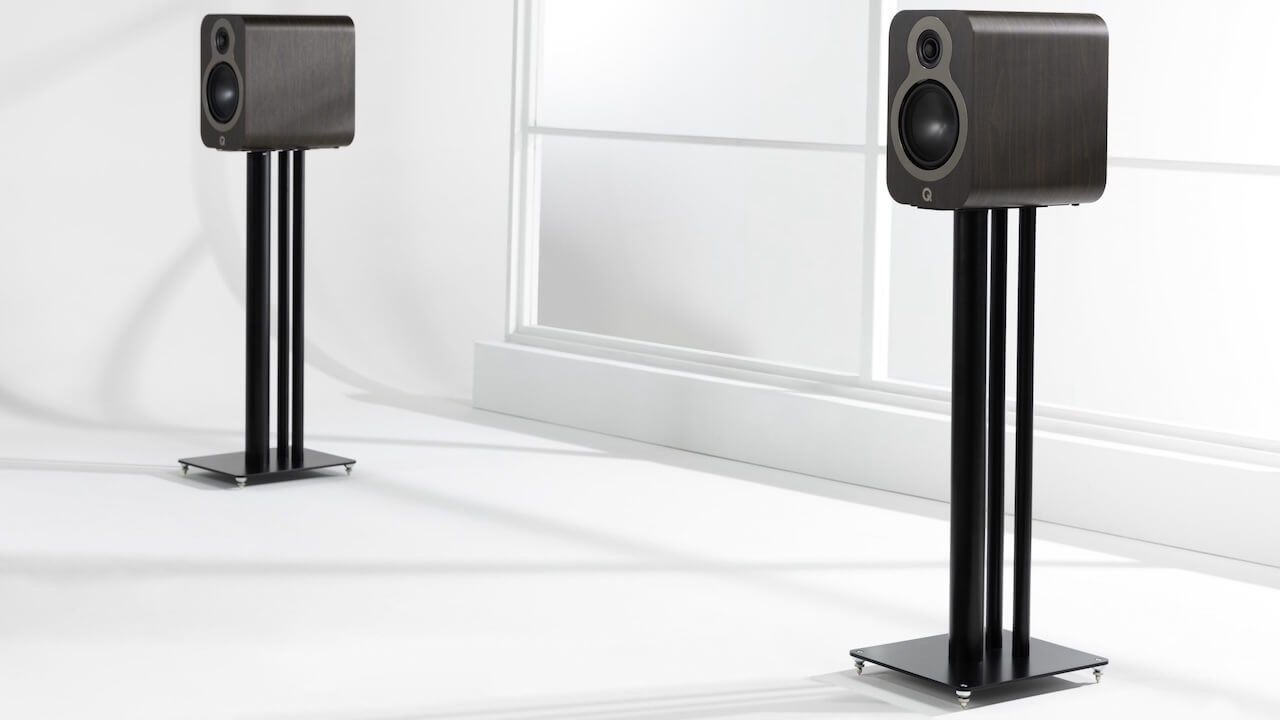
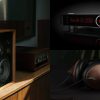
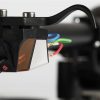
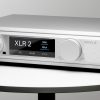
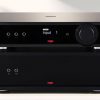
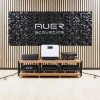
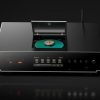
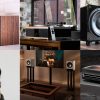
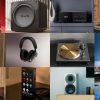

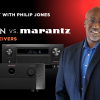
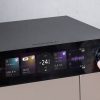

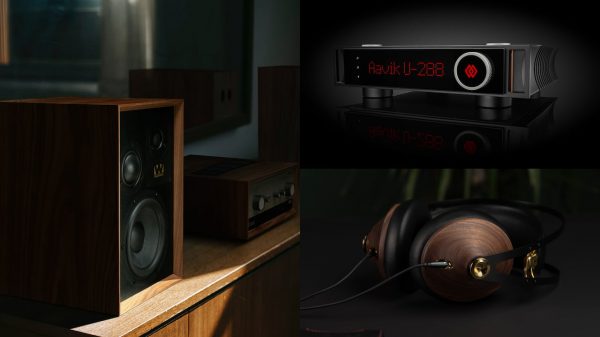

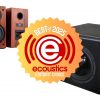


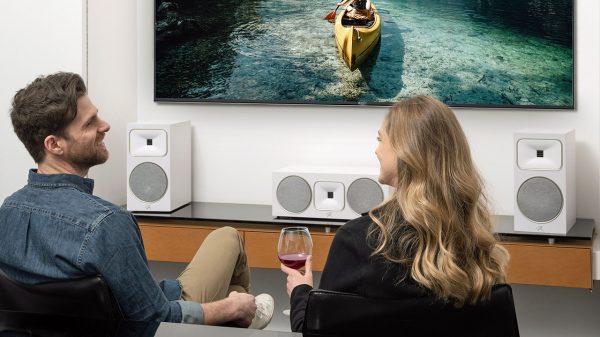
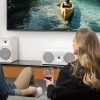
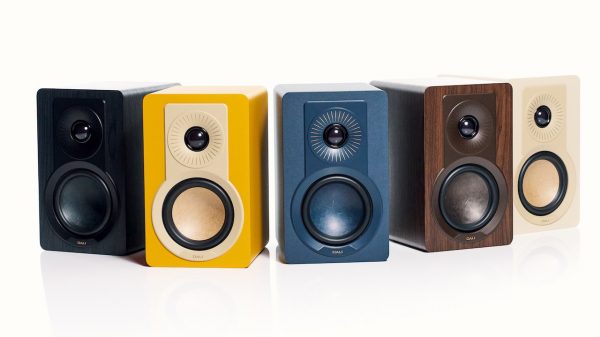
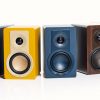



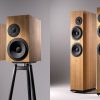
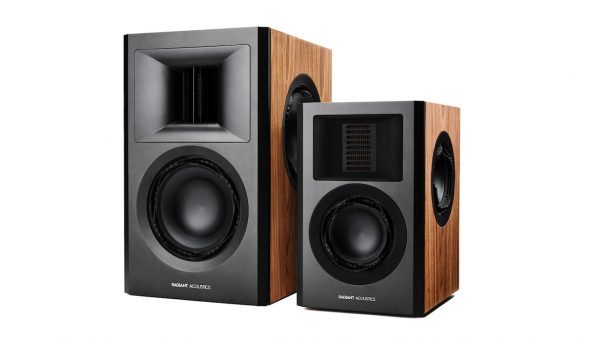
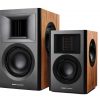











Anton
May 25, 2025 at 12:53 pm
Very thorough review but a few questions:
1. Why the discrepancy in price?
2. Does it make more sense to spend more on the 5020?
3. Just how thin is the bass compared to the 5020, Acoustic Energy AE100 MKII, and entry-level KEF?
Ian White
May 25, 2025 at 2:25 pm
Anton,
The price has gone up because of the tariffs. Not sure why Amazon has it for less. Will find out from Q Acoustics and Fidelity Imports. Does it make sense to spend more on the 5020? I think that really depends on the rest of the system. The 5020 is better at dynamics and the bass feels slightly fuller below 100Hz. Neither speaker is a “warm” listen. Similar drivers with some modifications. I would personally spend the extra money on the 5020. Do I think the 3020c is superior to the 3020i or 2030i? They don’t really sound the same — the 3020c is cleaner and more detailed sounding. It’s also thinner sounding and better for darker sounding amplifiers. The NAD C316BEE V2 is great with it.
The AE100 MkII has more energy overall from the mid-bass through the treble, but it’s also sorta lightweight in the bass department. Two very good speakers at their price points. Not a fan of the entry-level KEF.
IW
Kurt Vonn
May 26, 2025 at 11:00 pm
Like to hear the little ones next to my JBL 4301b for comparison.